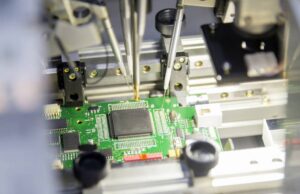Bluetooth Circuit Board Optimization Design Guide
2023-02-20
Bluetooth technology goes into a wide variety of electronics and devices. From headsets, audio products, and wireless electronics to home automation systems, the applications for Bluetooth technology continue to expand. When designing a PCB using Bluetooth technology, there are a number of challenges.
- Signal integrity
- Interference
- Data loss, etc.
For the above problems, it is necessary to take some precautions.
Applications of Bluetooth technology
1. Audio/stereo products
2. Remote peripherals, such as game control or computer mouse/keyboard
3. Wireless electronic consumer products, such as cameras, printers, telephones
4. Large shopping mall beacons
5. Eddy current frames for industrial sensing applications, etc.
Bluetooth Circuit Board Optimization Design Guide
Because there are many sensitive components, they should handle carefully. Here are some design guidelines to follow regarding Bluetooth circuit boards.
Authentication Module
If Bluetooth is to be integrated into a product and resources are limited, consider using a pre-certified, fully included module to help speed development and time to market.
Check your Bluetooth device selection
Make sure you have the correct Bluetooth device for the application as well as the antennas are the right size and tuning. If you are going to use a simple beacon application, you can use low-power Bluetooth, but for higher throughput, you need something with more Tx power and faster data rates.
Separate or remove copper signals and high-energy components
Keep the antenna area free of any copper signals near the antenna area as well as high energy components (especially power paths that are switched through boost or buck converters). This also includes keeping the site (and board layers) free of planar and polygon dumping.
If you are going to arrange the antenna area manually, use ground planes appropriately to maintain good bandwidth at the input and make sure to leave enough space for tuning components (printed and ceramic antennas require ground planes).
Power supply considerations
It is essential to check that the rails supplying power to the Bluetooth module or chip are kept clean. You can also use ferrite beads on the power rails in the Bluetooth area of the board to suppress high-frequency noise.
Shielding strategies
Using EMI shielding strategies (such as increasing the distance between traces or adding EMI shielding) can ensure that high-frequency coupling does not interfere with components.
Physical size limitations
Most Bluetooth devices are portable and need to be placed in an enclosure, in addition to the board space limitations, as your device will also implement other functions.
Summary
Whether you are designing a small, simple Beacon module or a data streaming, power-hungry Bluetooth hub, following these considerations can save you a lot of trouble during your design's test/implementation phase.
At KingPCB, we will follow the industry's best practices for efficient, high-quality handling of your PCB manufacturing and assembly needs. Contact us now or send an email to sales@kingpcb.com



